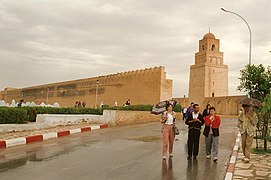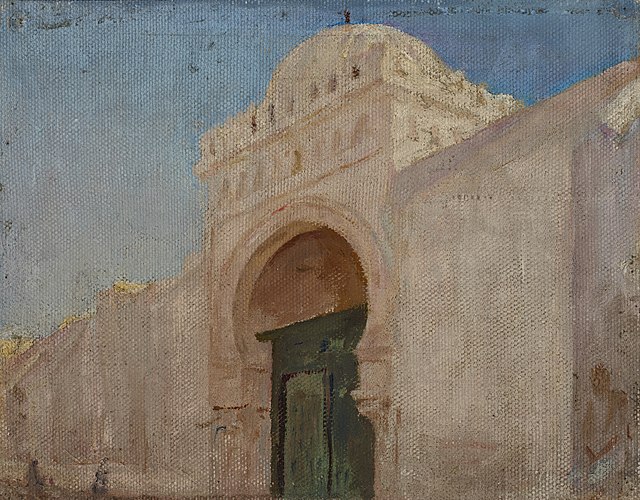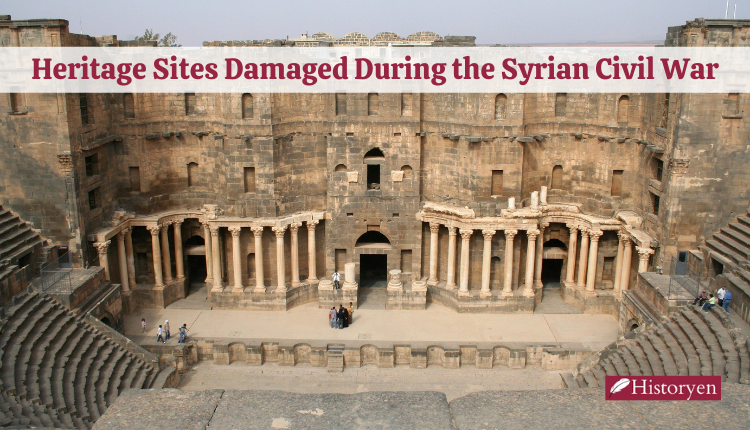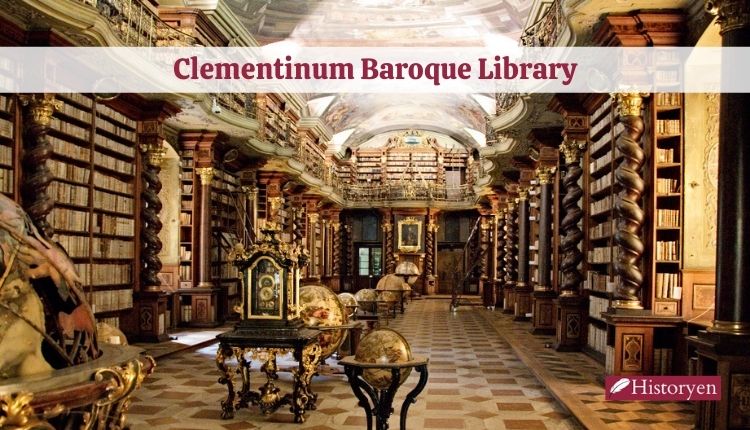The Mosque of Kairouan, also known as the Great Mosque of Kairouan, is a magnificent architectural masterpiece located in Kairouan, Tunisia. As one of the oldest and most significant mosques in the Islamic world, it stands as a symbol of the rich history and cultural heritage of the Muslim civilization. This article delves into the awe-inspiring details of the Mosque of Kairouan, exploring its historical significance, architectural features, and its enduring influence on Islamic art and culture.
Introduction: The Historical Significance of the Mosque of Kairouan

The Mosque of Kairouan holds immense historical significance, as it was founded in the 9th century and stands as one of the oldest places of Islamic worship in North Africa. It was built during the reign of the Aghlabid dynasty, which played a vital role in spreading Islamic civilization throughout the region. The mosque served as a center for religious and intellectual activities, making Kairouan a thriving hub of knowledge and culture.
The Architecture of the Mosque of Kairouan

The Exterior Design
The mosque showcases a mesmerizing blend of architectural styles, representing the various influences and cultural exchanges that shaped Islamic art. The exterior features intricately carved stone facades, adorned with geometric patterns and calligraphic inscriptions from the Quran. The imposing arched entrance, known as the Bab al-Wud, welcomes visitors into the grandeur of the mosque.
The Interior Layout
Stepping inside the mosque, one is greeted by a vast prayer hall adorned with graceful columns and arches. The prayer hall is divided into a series of naves by rows of columns, creating a sense of harmony and tranquility. The mihrab, a semicircular niche in the qibla wall, indicates the direction of Mecca and serves as a focal point during prayers.
The Courtyard and Minaret
The mosque also features a spacious courtyard, providing an open area for worshippers to gather and engage in communal activities. The central courtyard is surrounded by a colonnade and features a beautiful ablution fountain, where Muslims perform ritual washing before prayer. Rising above the mosque, the minaret stands tall as a symbol of Islamic identity, with its distinctive spiral staircase and beautiful balconies.
Historical Evolution of the Mosque

The Mosque of Kairouan has a rich history that spans over a millennium. Its construction began in 670 AD during the Umayyad Caliphate, making it one of the oldest mosques in North Africa and the Western Islamic world. The original structure was a modest prayer hall built by the Arab general Uqba ibn Nafi, who founded the city of Kairouan.
Over time, the mosque underwent several expansions and renovations to accommodate the growing Muslim population and reflect the changing architectural styles. One of the most significant expansions occurred during the rule of the Aghlabid dynasty in the 9th century. Under their patronage, the mosque was greatly expanded and embellished to its current grandeur.
During the Fatimid dynasty in the 10th century, the mosque underwent further renovations. The Fatimids added decorative elements, such as the intricate stucco carvings and calligraphic inscriptions, which enhanced the beauty of the mosque. They also expanded the prayer hall and built the mihrab, the semicircular niche indicating the direction of Mecca, which became a focal point for worshippers.
The Zirid dynasty, which ruled Kairouan in the 11th century, also made significant contributions to the mosque’s architecture. They constructed the famous minaret, which stands at over 30 meters tall and has become an iconic symbol of the mosque. The minaret features a unique spiral staircase and beautifully decorated balconies.
Throughout its history, the Mosque of Kairouan has experienced periods of decline and destruction due to political turmoil and natural disasters. However, it has always been restored and rebuilt to preserve its significance as a place of worship and cultural heritage.
In the modern era, restoration efforts have focused on preserving the mosque’s original features and maintaining its historical authenticity. UNESCO recognized the cultural and historical importance of the Mosque of Kairouan and designated it as a World Heritage Site in 1988, further emphasizing the need for its preservation.
Today, the Mosque of Kairouan stands as a testament to the evolution of Islamic architecture and the enduring legacy of Islamic civilization. It continues to inspire architects, scholars, and visitors with its remarkable beauty, harmonious design, and profound historical significance.
The Cultural and Religious Importance of the Mosque of Kairouan

The Mosque of Kairouan holds deep cultural and religious significance for Muslims worldwide. It represents a place of spiritual devotion and serves as a reminder of the values and teachings of Islam. The mosque has been a source of inspiration for countless generations, fostering a sense of unity and connection among Muslims throughout history.
Restoration Efforts and Preservation

Recognizing the historical and architectural value of the Mosque of Kairouan, significant restoration efforts have been undertaken to preserve its original splendor. UNESCO designated the mosque as a World Heritage Site, further emphasizing its global significance. Restoration projects have focused on maintaining the structural integrity, conserving the intricate decorative elements, and ensuring the mosque’s longevity for future generations.
The Mosque of Kairouan: A Tourist Attraction

Today, the Mosque of Kairouan attracts tourists and visitors from around the world. Its remarkable architecture, rich history, and cultural significance make it a must-visit destination for those interested in Islamic art and heritage. Visitors can marvel at the intricate details of the mosque, experience the peaceful atmosphere of the prayer hall, and gain a deeper understanding of the Islamic faith.
Impact on Islamic Art and Architecture

The Mosque of Kairouan has had a profound influence on Islamic art and architecture. Its unique blend of architectural styles, from Byzantine and Roman influences to traditional Islamic elements, set the precedent for future mosques and structures throughout the Islamic world. The mosque’s aesthetic beauty and harmonious design continue to inspire contemporary architects and artists, shaping the visual language of Islamic aesthetics.
Contributions to Islamic Education
Throughout history, the Mosque of Kairouan has played a pivotal role in Islamic education. It housed renowned scholars and attracted students from distant lands, establishing itself as a center of learning. The mosque’s libraries and educational institutions nurtured a spirit of intellectual curiosity and academic excellence, contributing to the advancement of various disciplines, including Islamic law, theology, and science.
Significance in Modern Times
In the modern era, the Mosque of Kairouan remains a testament to the endurance and resilience of Islamic civilization. It symbolizes the rich cultural heritage of Tunisia and serves as a unifying force for Muslims worldwide. The mosque continues to be a sacred space for worship and contemplation, fostering a sense of community and spirituality among its visitors.
Conclusion
The Mosque of Kairouan stands as an architectural marvel and a symbol of Islamic identity. Its historical significance, breathtaking design, and lasting impact on Islamic art and culture make it a cherished heritage site. As visitors explore its halls and courtyards, they are transported through time, experiencing the spiritual devotion and intellectual pursuit that have characterized this remarkable place of worship.



